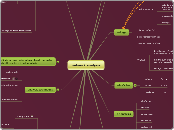network analysis
components
resistor
passive component = contributes no power gain to a circuit or system, examples include lightbulbs, toasters, etc.
opposes the flow of electrical current through itself.
capacitor
stores energy in an electric field, by accumulating an internal imbalance of electric charge.
passive component, reactive component
opposes any change in voltage across its terminals, by storing and releasing energy in an internal electric field.
inductor
stores energy in a magnetic field
passoive component
opposes any change in current through itself, by storing and releasing energy in a magnetic field surrounding itself.
voltage source/current source
vccs
vcvs
cccs
ccvs
independent voltage
independent current
the above are active devices
circuit structure determines circuit behavior which allows for circuit analysis
current
transfer of charge
numerical value
direction
power relation
voltage
physical quantity
voltage is the potential difference between two charged objects.
potentials can be added or subtracted in series to make larger or smaller potentials as is commonly done in batteries.
electrons flow from areas of high potential to lower potential.
Subtopic
polarity: "+" or "-"
exists "across" terminals
pressure, force, emf, etc.
KVL/KCL
kvl: the sum of voltage drops around any loop in the circuit that starts and ends at the same place must be zero.
kcl: the sum of all current entering a node must equal the sum of all currents leaving the node.
voltage divider:series :: current divider:parallel
ohm's law
voltage
i*r = v
current
v/r = i
resistance
v/i = r
dc analysis
ohm's law
linearity
equivalence
kvl and kcl
nodal/mesh
transient analysis
impedance
time constant
differential equation
phase difference
response type
initial condition
analysis techniques
nodal/mesh
superposition
source transformation
thevenin/norton
equivalent circuit concept
method of simplifying circuit
maximum power transfer
ac analysis
steady state
impedance
is the quantity that relates voltage and current in the frequency domain.
phasors
complex numbers
euler's formula
sinusoidal signals
time/frequency analysis
switching from time domain to frequency domain
power
peak to peak
root mean square
frequency domain
transformation
frequency response analysis
nodal
kcl basis
ac circuit application
steps to determine node voltages:
Subtopic
Subtopic
Subtopic
Nonlinear Circuits
are circuits that have one or more elements that are nonlinear
elements are nonlinear if the current throught it and the voltage across it creates a nonlinear relationship
mesh
dc circuit application
steps to determine mesh currents:
1. assign mesh currents-- i1, i2, i3, etc-- into n meshes
2. apply kvl to each of the n meshes. use ohm's law to express the voltages in terms of mesh currents.
Subtopic
kcl basis
ac circuit application
steps to analyze ac circuit:
1. transform to phasor or frequency domain
2. solve using mesh analysis
Subtopic
power dissipation
resistors always dissipate power
series/parallel
resistors
series circuit rules:
parallel circuit rules:
voltage sources
current sources
inductors
capacitors
components are connected
p = iv
p = i^2*r
p = v^2/r
nodal
dc circuit application
steps to determine node voltages:
1. select a reference node and assign voltages v1, v2, etc, to the remaining n-1 nodes.
2. apply kcl to each of the n-1 non-reference nodes. use ohm's law to express the branch currents in terms of node voltages.
3. solve the resulting simultaneous equations to obtain the unknown node voltages.
kvl basis
Nonlinear circuits can be modeled as linear circuits in order to evaluate
first order
RC circuit
LC circuit
RL circuit
power in frequency domain
second order
RLC circuit
time domain
damping
frequency domain
s-domain
kirchhoff's laws
current
KCL
voltage
KVL
